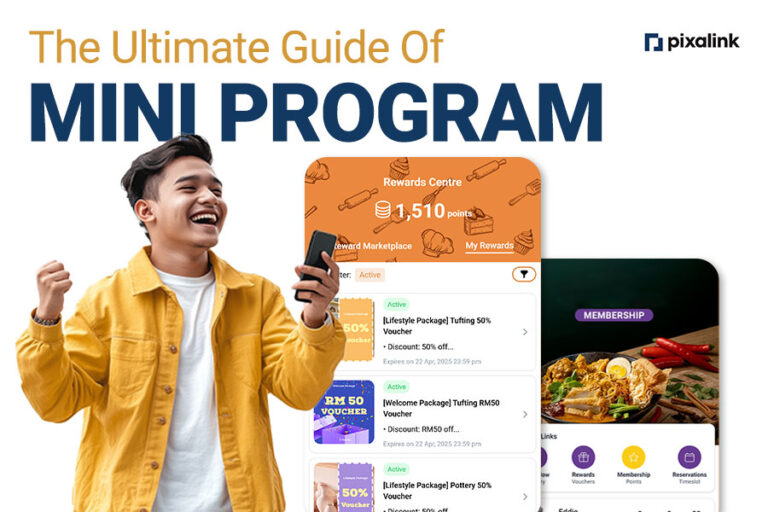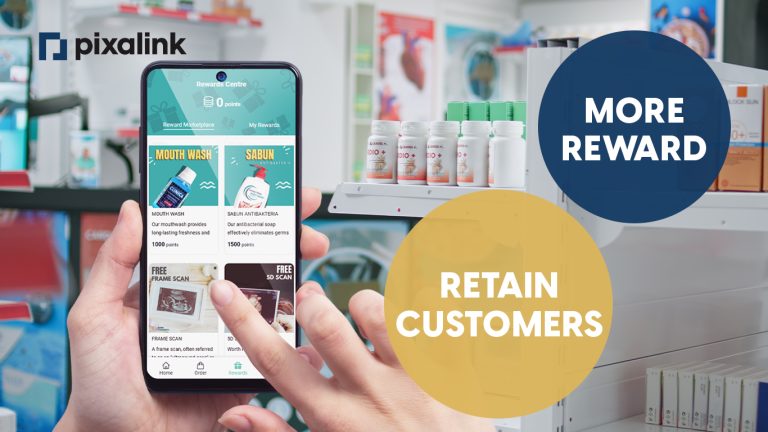In Malaysia’s competitive business landscape, acquiring new customers is just the beginning. The real challenge—and opportunity—lies in keeping them coming back. As we navigate through 2025, Malaysian businesses are discovering that customer retention strategies must evolve to match changing consumer behaviors, particularly among the younger demographic.
This comprehensive guide reveals the most effective customer retention tactics that are delivering results for Malaysian businesses right now.
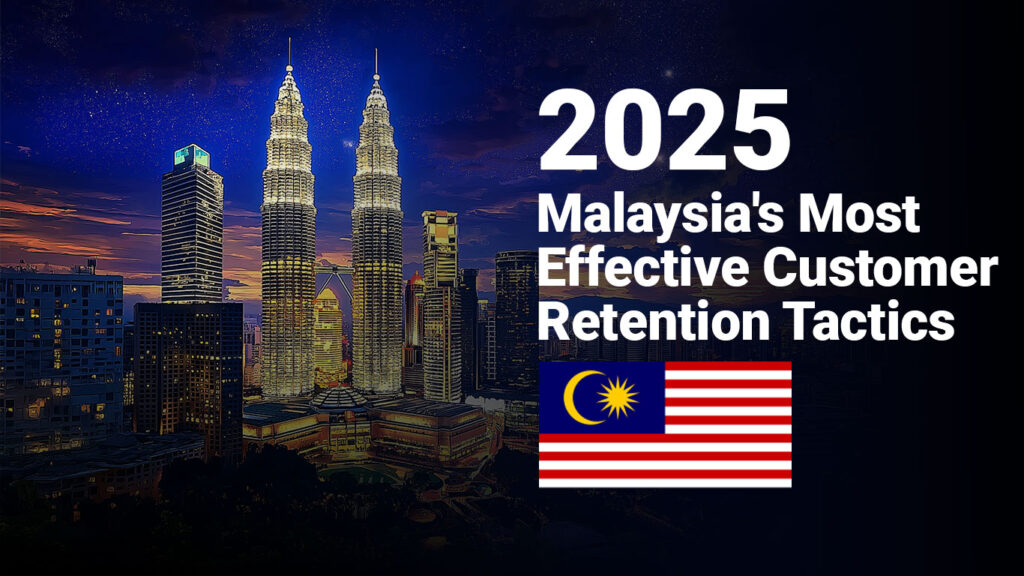
The Evolving Malaysian Consumer in 2025
Understanding the New Generation

Today’s Malaysian consumers, especially the younger generation, have distinct preferences that directly impact retention strategies:
- Digital-first mindset: They expect seamless digital experiences across all touchpoints
- Value efficiency: Time is precious, and they avoid complicated processes
- Incentive-driven: They respond strongly to rewards and special offers
- Experience-focused: They value experiences over mere transactions
- App-resistant: They’re selective about which apps deserve space on their devices
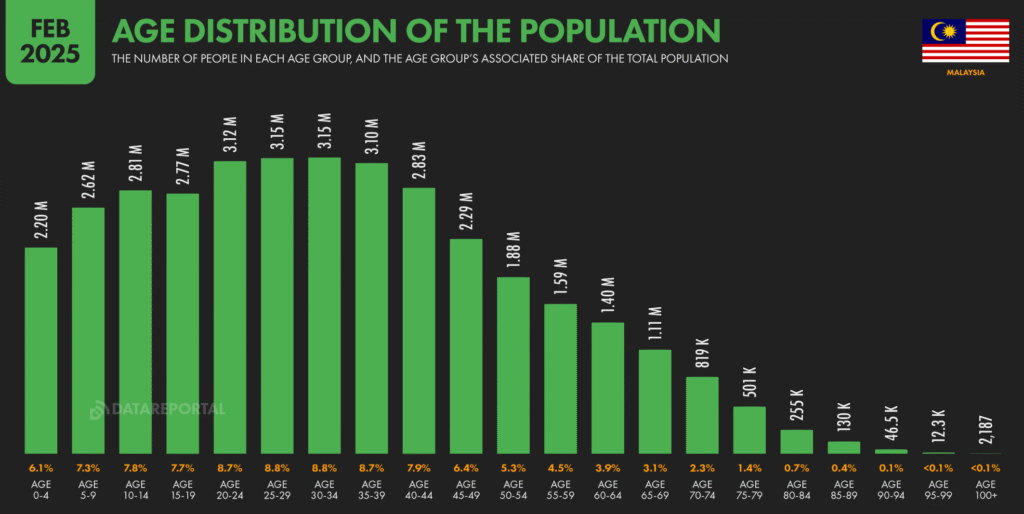
A recent survey by the Malaysian Digital Association found that 73% of Malaysian consumers under 35 have become increasingly selective about downloading new apps, citing concerns about phone storage, data usage, and privacy. Malaysia current largest group of people are at their 25-34 of age.
Top 10 Most Effective Customer Retention Tactics in Malaysia
1. Web-Based Loyalty Programs (No Downloads Required)

The most significant shift in customer retention strategy has been moving away from app-based loyalty programs. Malaysian businesses are seeing dramatic improvements in engagement by implementing web-based mini programs that offer app-like functionality without requiring downloads.
Why it works: Malaysians have developed “app fatigue” and are reluctant to download standalone apps for individual businesses. Web-based loyalty programs remove this barrier to entry while still delivering personalized experiences.
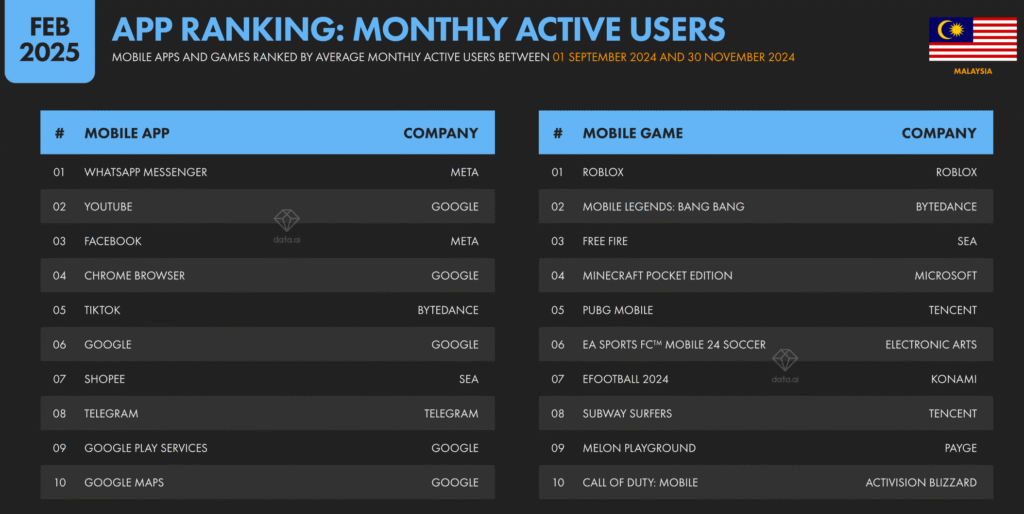
The number of user uses Chrome Browser is ranked number #4 in Malaysia for using the internet, which make all sense to rely on web browser for any mini program or web-app for easiest access and use WhatsApp as their main communication tools.
Case Study: A leading bubble tea chain in Kuala Lumpur switched from an app-based loyalty program to Pixalink’s mini program solution and saw a 64% increase in program participation within three months.
2. Simplified Registration Process
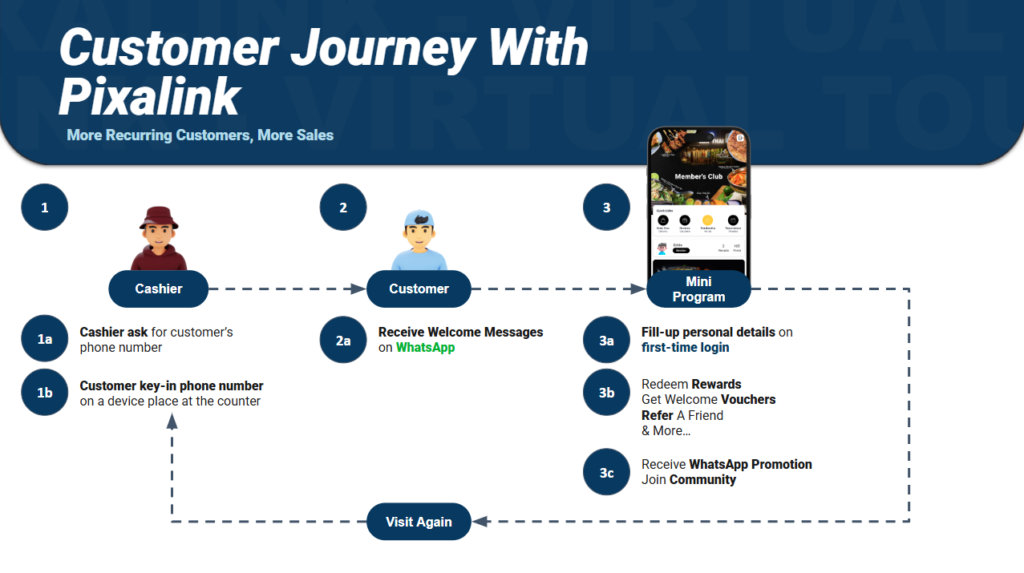
Successful Malaysian businesses are minimizing registration friction by requiring only essential information upfront—typically just a phone number—and progressively collecting additional data over time.
Why it works: Malaysian consumers are increasingly protective of their personal information and abandon registration processes that seem intrusive or time-consuming.
Implementation tip: Start with collecting only a phone number, then gradually request additional information like name, email, and birth date as the relationship develops, offering small incentives for each piece of information shared.
3. Culturally Relevant Rewards and Promotions
Effective loyalty programs in Malaysia incorporate rewards tied to cultural celebrations and local preferences.
Why it works: Malaysia’s rich multicultural environment offers numerous opportunities for themed promotions that resonate on a personal level with consumers.
Examples:
- Special Raya point multipliers during Ramadan
- Prosperity rewards for Chinese New Year
- Family-focused promotions during school holidays
- Exclusive birthday rewards (especially popular with Gen Z consumers)
4. Real-Time, Personalized Messaging
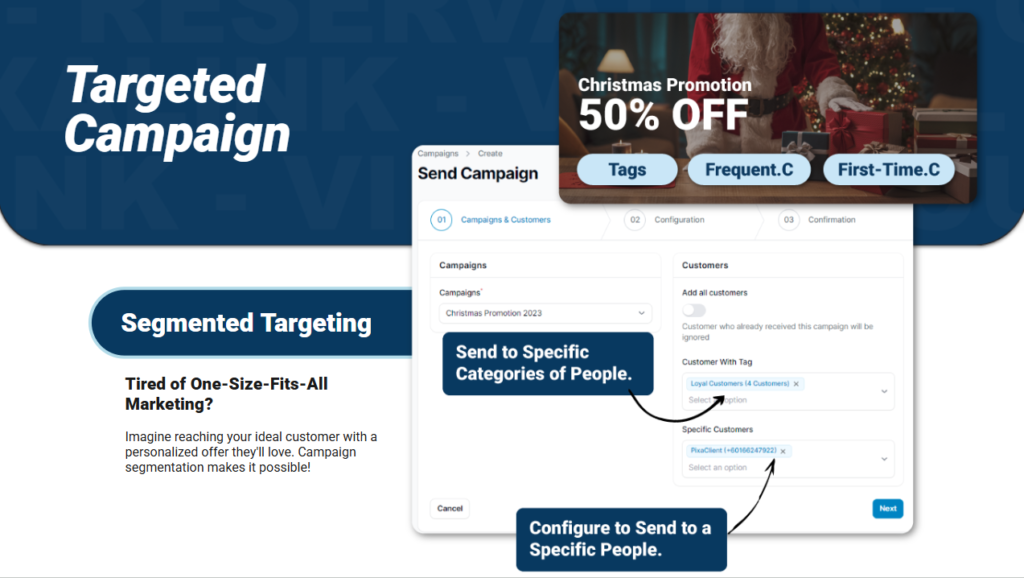
Malaysian businesses seeing the highest retention rates are implementing real-time, behavior-triggered communications through WhatsApp and other messaging platforms.
Why it works: Malaysian consumers check WhatsApp frequently (average of 23 times daily according to recent data) and prefer its convenience over email or push notifications.
Implementation tip: Set up automated but personalized messages triggered by specific customer behaviors, such as returning after absence, reaching point thresholds, or abandoning carts.
5. Tiered Loyalty Systems with Visible Progression
Programs that show customers their progress toward the next reward or tier are proving particularly effective in the Malaysian market.
Why it works: Malaysian consumers, particularly younger ones, are motivated by gamification elements and status recognition.
Case Study: A local café chain implemented a visual progression bar in their loyalty program and saw a 37% increase in average customer visit frequency, with customers accelerating purchases as they approached rewards thresholds.
6. Integration with Preferred Payment Methods
Loyalty programs that integrate seamlessly with popular Malaysian payment methods are seeing higher engagement rates.
Why it works: E-wallets and digital payment solutions have seen explosive growth in Malaysia, with Touch ‘n Go eWallet, GrabPay, and Boost becoming preferred payment methods.
Implementation tip: Ensure your loyalty program integrates with Malaysia’s most popular e-wallets and allows customers to easily link their preferred payment methods.
7. Community-Building Initiatives
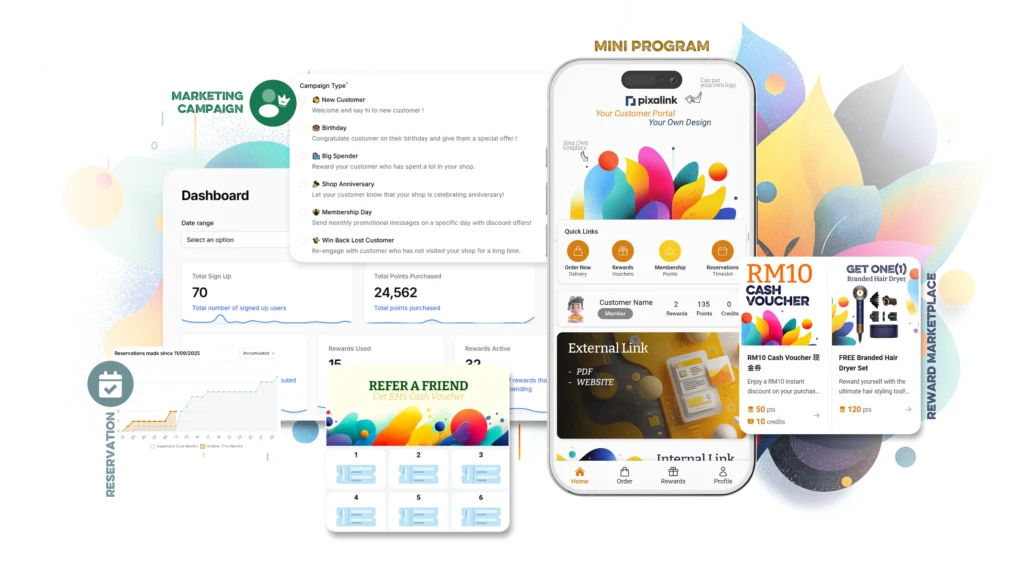
Successful retention strategies in Malaysia often incorporate community elements that foster a sense of belonging.
Why it works: Malaysian culture is community-oriented, and businesses that tap into this cultural characteristic see stronger emotional connections with their brand.
Examples:
- Exclusive events for loyalty members
- Member-get-member referral rewards
- Community challenges with shared rewards
- User-generated content campaigns with recognition
8. Surprise and Delight Moments
Unexpected rewards and personalized gestures are proving highly effective for Malaysian businesses looking to boost emotional loyalty.
Why it works: Surprise elements create memorable experiences that customers share with friends and family, extending the brand’s reach through word of mouth—still a powerful force in Malaysian consumer culture.
Implementation tip: Schedule occasional surprise rewards for loyal customers, especially during significant milestones in their customer journey or personal life (if such information has been shared).
9. Omnichannel Experience with Consistent Recognition
Malaysian businesses seeing the highest retention rates ensure customer recognition is consistent across all channels—online, in-app, and in-store.
Why it works: Malaysian consumers increasingly shop across multiple channels and expect their loyalty status and benefits to travel with them regardless of how they interact with a brand.
Case Study: A fashion retailer implemented Pixalink’s system to recognize loyalty members across their ecommerce site, physical stores, and social media shopping, resulting in a 41% increase in cross-channel shopping behavior.
10. Data-Driven Personalization (Without Being Intrusive)
The most sophisticated retention strategies in Malaysia leverage customer data to create personalized experiences while respecting privacy concerns.
Why it works: Malaysian consumers appreciate personalization but are increasingly aware of privacy issues; businesses that find the right balance see stronger loyalty.
Implementation tip: Focus personalization on product recommendations and special offers based on past purchases rather than overtly personal characteristics.
The Mini Program Revolution in Malaysian Customer Retention
The standout trend in Malaysian customer retention is the dramatic shift toward mini programs—web-based loyalty solutions that offer the functionality of apps without requiring downloads.
Why Mini Programs Are Winning in Malaysia

- No download barriers: Eliminates the primary obstacle to loyalty program adoption
- Fast loading: Works well even in areas with variable internet connectivity
- Universal access: Available across all devices regardless of operating system
- Lower cost: Significantly more affordable for businesses compared to custom app development
- Progressive engagement: Allows for gradual collection of customer information
Pixalink: Leading the Mini Program Revolution
Malaysian businesses across sectors—from F&B to retail to services—are turning to Pixalink’s mini program solution to overcome the limitations of traditional loyalty approaches.
The platform allows businesses to quickly implement digital loyalty programs with:
- Simple phone number registration
- Progressive data collection
- Customizable rewards structures
- Integration with popular Malaysian payment methods
- Real-time analytics and campaign management
Implementation Strategy: Getting Started with Modern Retention Tactics
Membership System Architecture
🎯 Precision & Cost
- Economize costs (7x LTV)
- Enable Precision Marketing
📈 Value & Loyalty
- Increase Repurchase & Loyalty
- Increase User Lifetime Value
- Top 20% generate 80% revenue
💡 Data & Strategy
- Predict User Behavior
- Segment Users (Pleasure, Anxious, Loyal)
1. Member Tagging
Goal: Segment users based on consumption, anxiety, pleasure, and loyalty to enable differentiated strategies.
2. Points System
- **Key Function:** Consumption & Interaction
- **Acquisition:** Consumption, Interactive Games (Turntable, Farm)
- **Utility:** Product Discounts, Redemption, Offsetting Purchase Price (e.g., $3000 + 300 points)
- **Control:** Regular clearing of accumulated points to manage business liability.
3. Growth System (Tiers)
- **Tiers:** VIP1 (White Gold) → VIP4 (Diamond – Loyal Fans)
- **Goal:** Increase average single customer value (up to 20x average for VIP4)
- **Rules:** Tiers should be relatively easy to achieve, and not require excessive thought.
- **Benefits:** Discounts (e.g., 95% off for VIP2), Gifts, Exclusive Rights.
4. RFM Model
- **R (Recency):** Time since last transaction.
- **F (Frequency):** Number of transactions in a recent period.
- **M (Monetary):** Amount spent in a recent period.
- **Usage:** Measures user value and guides resource allocation.
For Malaysian businesses looking to implement these effective retention tactics, follow this proven roadmap:
Step 1: Evaluate Your Current Retention Metrics
Before implementing new tactics, establish baseline metrics for:
- Customer retention rate
- Average customer lifetime value
- Repeat purchase rate
- Time between purchases
Step 2: Identify Your Primary Retention Barriers
Common barriers for Malaysian businesses include:
- Complicated registration processes
- Requiring app downloads
- Generic, impersonal rewards
- Disconnected omnichannel experiences
Step 3: Choose the Right Technology Partner
Look for solutions that:
- Offer web-based loyalty programs without app downloads
- Support progressive registration starting with just phone numbers
- Integrate with Malaysian payment platforms
- Provide robust analytics and personalization capabilities
Step 4: Design a Culturally Relevant Reward Structure
Ensure your rewards:
- Reflect Malaysian values and preferences
- Include special offers during cultural celebrations
- Provide both immediate and long-term benefits
- Create a sense of status and recognition
Step 5: Launch, Measure, and Optimize
Successful implementation requires:
- Clear communication of program benefits
- Employee training on program execution
- Regular analysis of performance metrics
- Continuous optimization based on customer feedback
The Future of Customer Retention in Malaysia
Looking ahead, several emerging trends will shape customer retention in Malaysia:
1. AI-Powered Hyper-Personalization
AI systems will enable even more sophisticated personalization, predicting customer needs before they’re expressed.
2. Voice-Activated Loyalty Interactions
As voice technology becomes more prevalent, loyalty programs will adapt to allow for voice-activated point checking and reward redemption.
3. Blockchain-Based Loyalty Programs
Blockchain technology will enable more secure, transparent loyalty programs with potential for cross-brand point exchange.
4. Sustainability-Linked Loyalty
As environmental consciousness grows among Malaysian consumers, loyalty programs will increasingly incorporate sustainability elements.
Conclusion: The New Loyalty Paradigm
The most effective customer retention tactics in Malaysia for 2025 reflect a fundamental shift in how businesses approach loyalty. The focus has moved from traditional points-based systems to creating frictionless, personalized experiences that recognize and reward customers while respecting their time and preferences.
By implementing these proven tactics—particularly embracing web-based mini programs like Pixalink that eliminate download barriers—Malaysian businesses can significantly improve customer retention rates and build lasting relationships with their customers.
The businesses that thrive will be those that continuously adapt their retention strategies to align with the evolving preferences of Malaysian consumers, creating loyalty programs that feel less like marketing initiatives and more like valuable extensions of the customer experience.




